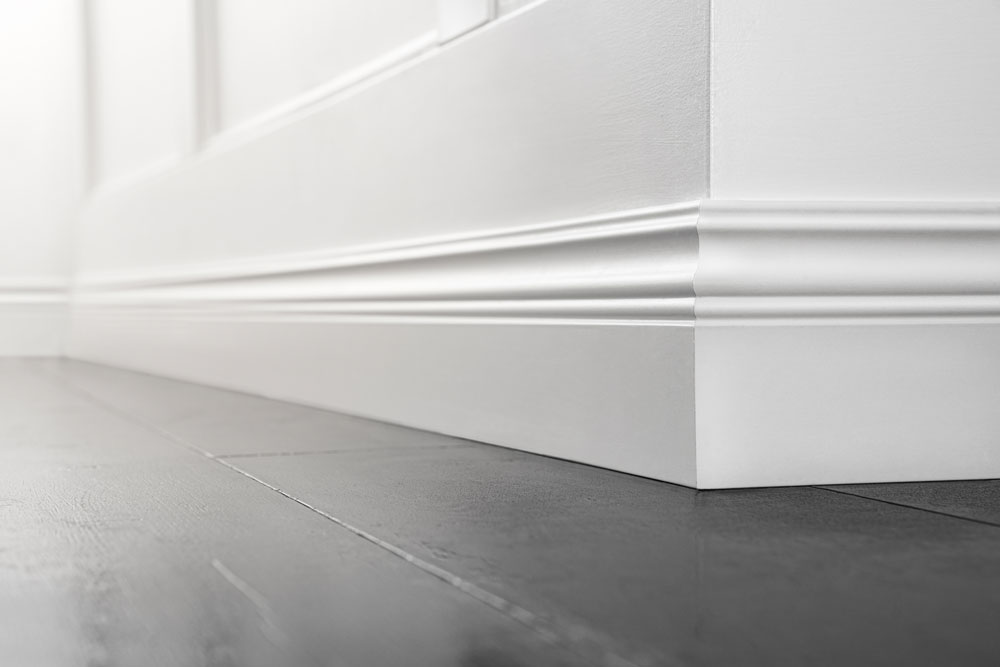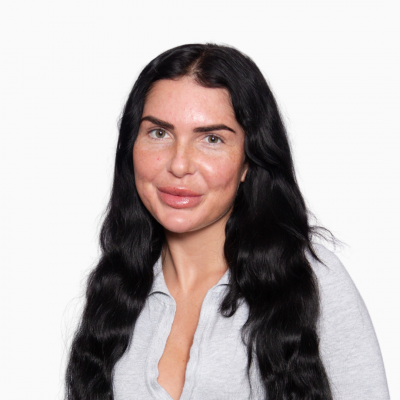How To Get Rid Of Mould On Skirting Boards
 CONTENTS
CONTENTS
- What causes mould on skirting boards?
- The effects of mould growth
- How to remove mould from skirting boards
- How to prevent mould on skirting boards
- Get in touch
Green and black patches on mould on your clean, white skirting boards don't just look unattractive. They could be a sign of a serious damp problem in your home and can put people's health at risk. You must bring in professionals to remediate the mould as soon as possible.
Here at ICE Cleaning, we have mould removal specialists available nationwide who are ready to deal with your mould problem. Our nine-stage mould remediation process can eliminate all the mould in your home, including mould in the air, and give you peace of mind that your property is safe.
Read on to find out more about how to remove mould growing on skirting boards.
What causes mould on skirting boards?
Mould is caused by excess moisture. It also needs organic material, warmth, and oxygen to grow. It is usually caused by high humidity, penetrating and rising damp, condensation, flooding, and poor ventilation and air flow.
Mould is normally found growing on and around windows, and on ceilings and walls. When warm, humid air meets these surfaces, condensation forms on them, making them damp. If mould spores settle on these damp surfaces, they start to grow.
Condensation is what causes mould to grow on skirting boards, too. Their location - where cold external walls meet warm interiors - means the base of the walls can get wet and make your skirting boards damp.
Damp conditions under floors due to inadequate subfloor ventilation causes mould growth on skirting boards, as well, since they increase humidity levels within wall cavities.
The most common types of mould found on skirting boards are green and black moulds. Although many assume the latter is toxic as some kinds occasionally produce mycotoxins - toxic compounds - not all types of black mould are.
This also does not mean that non-black kinds of mould, like green mould on skirting boards, is not harmful. Any mould growth in your home, no matter the colour of it, must be dealt with immediately to stop it spreading in and damaging your home, and putting your health in danger.
The effects of mould growth
Inhaling, ingesting, and touching mould spores can trigger a range of health issues, from allergic reactions to asthma attacks and respiratory conditions. Toxic black mould on skirting boards is particularly dangerous as it can cause issues like sick building syndrome or fatal asthma attacks.
Certain groups are especially vulnerable to mould exposure. This includes children, elderly people, people with pre-existing conditions, and weakened immune systems.
Mould also feeds off organic material, like wood, paint, and wallpaper, and can slowly degrade the surfaces it grows on, leaving behind lasting damage. The persistent moisture that caused the mould can weaken wooden elements, like skirting boards, too
Given how quickly mould can spread, it can quickly take over your property and possessions. The skirting board's position means the walls and floors are at risk of mould growth.
This is troubling in rooms with carpet: mould thrives in carpet due to the deep fibres and presence of lots of dust, dirt, and crumbs. You can find out how to remove mould from carpet in this blog.
How to remove mould from skirting boards
You might assume that applying some bleach or vinegar to the affected surface and scrubbing at the mould will get rid of the fungus, but these DIY solutions are usually ineffective. Mould is stubborn and can penetrate deep into porous surfaces like wood, allowing a lot of the fungus to evade treatment.
The wrong method can even make the situation worse. Scrubbing at mould, for instance, may encourage it to release spores which could spread around your home, while harsh chemicals can leave behind damage and stains.
Mould is dangerous to clean without adequate protection equipment (PPE), too. You can easily inhale, ingest, or touch the mould during clean up, putting your health at risk.
To protect your health and home against mould, and ensure all the mould is gone for good, it is recommended you bring in mould removal professionals.
They will have the specialist cleaning chemicals and equipment, including PPE, to eliminate every trace of mould in the property as well as mould in the air. Mould removers will also be able to pinpoint the cause of the mould growth in your property and can advise on how to deal with the root cause to stop it coming back.
How to prevent mould on skirting boards
Keep humidity levels down
Banishing excess moisture is key. Use dehumidifiers and open windows when cooking or showering to lower humidity levels in your home. This will reduce the likelihood of condensation forming, keeping your skirting board dry.
Turn the heating on
To lower the chances of condensation further, make sure the surfaces in your home do not get too cold. Ensure there is plenty of insulation in your property, particularly behind skirting boards, and keep your home well heated.
Clean your skirting boards regularly
Mould feeds off of dirt, dust, and dead bugs. Removing them from skirting boards will prevent mould growth on them or at least slow it down if it does start to grow.
You should also wipe down walls and vacuum carpets and flooring often to prevent it growing on them, too.
Get in touch
Did you know we offer a lifetime guarantee* with every mould removal service? In the unlikely event the mould comes back, Our Dewpoint-accredited technicians will return to site and get rid of it for free.
To find out more about our mould remediation services, contact our team today on 0208 066 0360 or enquiries@icecleaning.co.uk.
*subject to advisories

Speak with me today,
I’m here to help
By asking you a few questions either via phone or email I can immediately provide a realistic estimation of the cost.
You’re in good company. We’ve cleaned for the following commercial clients… View all

Why choose us?
- Cater to a wide variety of cleaning situations
- Nationwide coverage, available 24/7
- Cater to commercial and domestic clients
- Free survey provided prior to quotation
- Emergency response team
- Offer a bespoke service designed to suit all your needs
- All technicians hold professional health and safety qualifications, including BICSc, IOSH, Dewpoint Professional & Safe Contractor
We’re fully accredited
We place best practise, professional expertise and health and safety at the core of our business. We’re fully compliant with all legal obligations. You can view a list of our accreditations below, or visit our Health & Safety page for more information.











-RGB-small.1707319151.jpg)




















